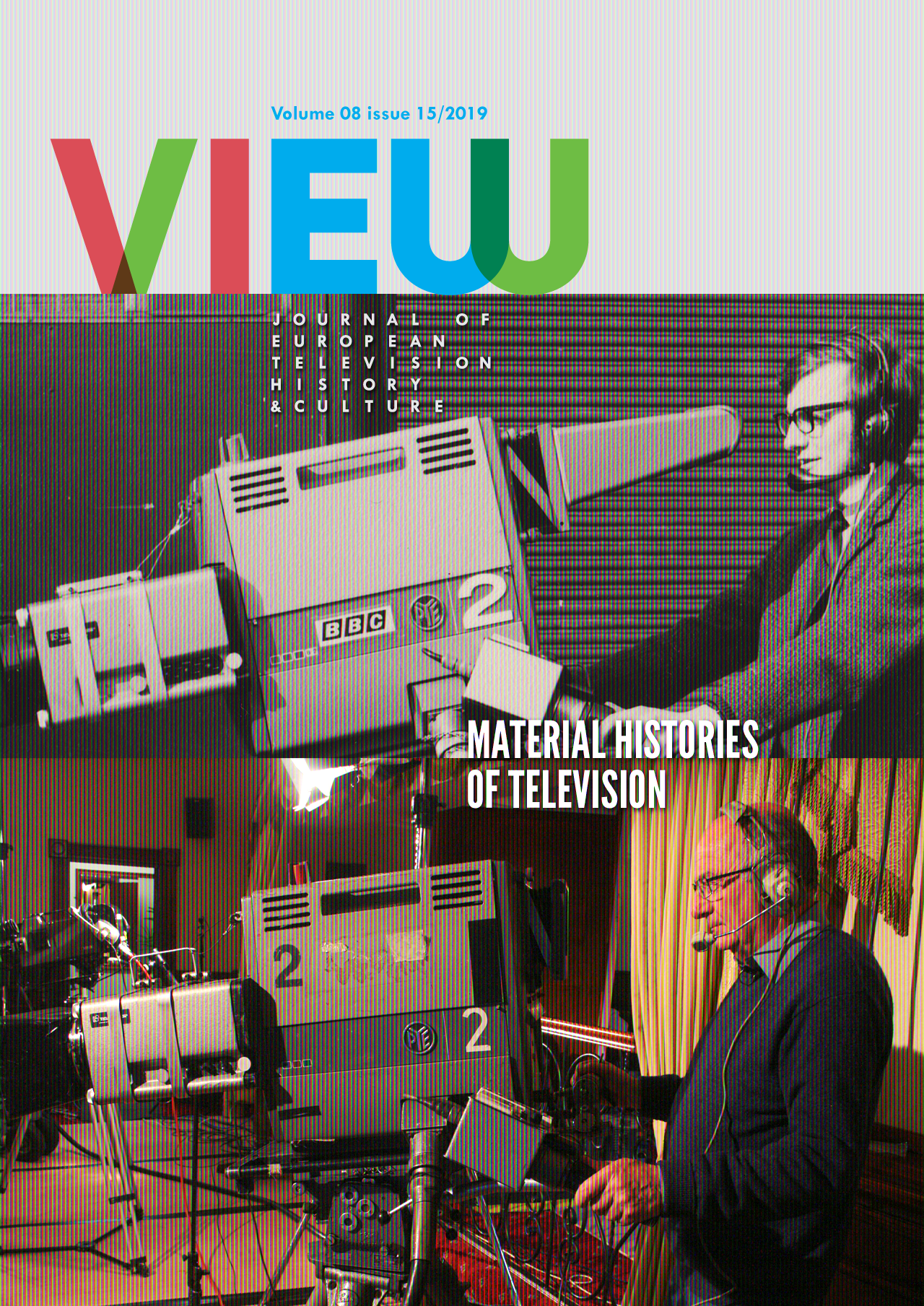Filming for Television: How a 16mm Film Crew Worked Together
DOI:
https://doi.org/10.18146/2213-0969.2019.jethc167Keywords:
film production, television history, production studies, media archaeology, 16mm film, Éclair, BBC, history of technologyAbstract
A media archaeology project reveals how film crews worked together. By reuniting analogue equipment with the professionals who used to use it, the ADAPT project is able to unpack the professional routines and relationships of both people and technology that are at the core of television production. This detailed study of a film crew setting up 16mm equipment reveals the constraints and affordances that defined analogue television material. To study working practices in a historical setting also reveals that there is an absent area in contemporary production studies: the work of ‘content acquisition’.
Published
2019-10-27
Issue
Section
Explorations
License
Copyright (c) 2019 The Author(s)

This work is licensed under a Creative Commons Attribution-ShareAlike 4.0 International License.
Authors who publish with this journal agree to the following terms:- Authors retain copyright and grant the journal right of first publication with the work simultaneously licensed under a Creative Commons Attribution License (CC BY-SA 4.0) that allows others to share the work with an acknowledgement of the work's authorship and initial publication in this journal.
- Authors are able to enter into separate, additional contractual arrangements for the non-exclusive distribution of the journal's published version of the work (e.g., post it to an institutional repository or publish it in a book), with an acknowledgement of its initial publication in this journal.
- Authors are permitted and encouraged to post their work online (e.g., in institutional repositories or on their website) prior to and during the submission process, as it can lead to productive exchanges, as well as earlier and greater citation of published work (See The Effect of Open Access).

